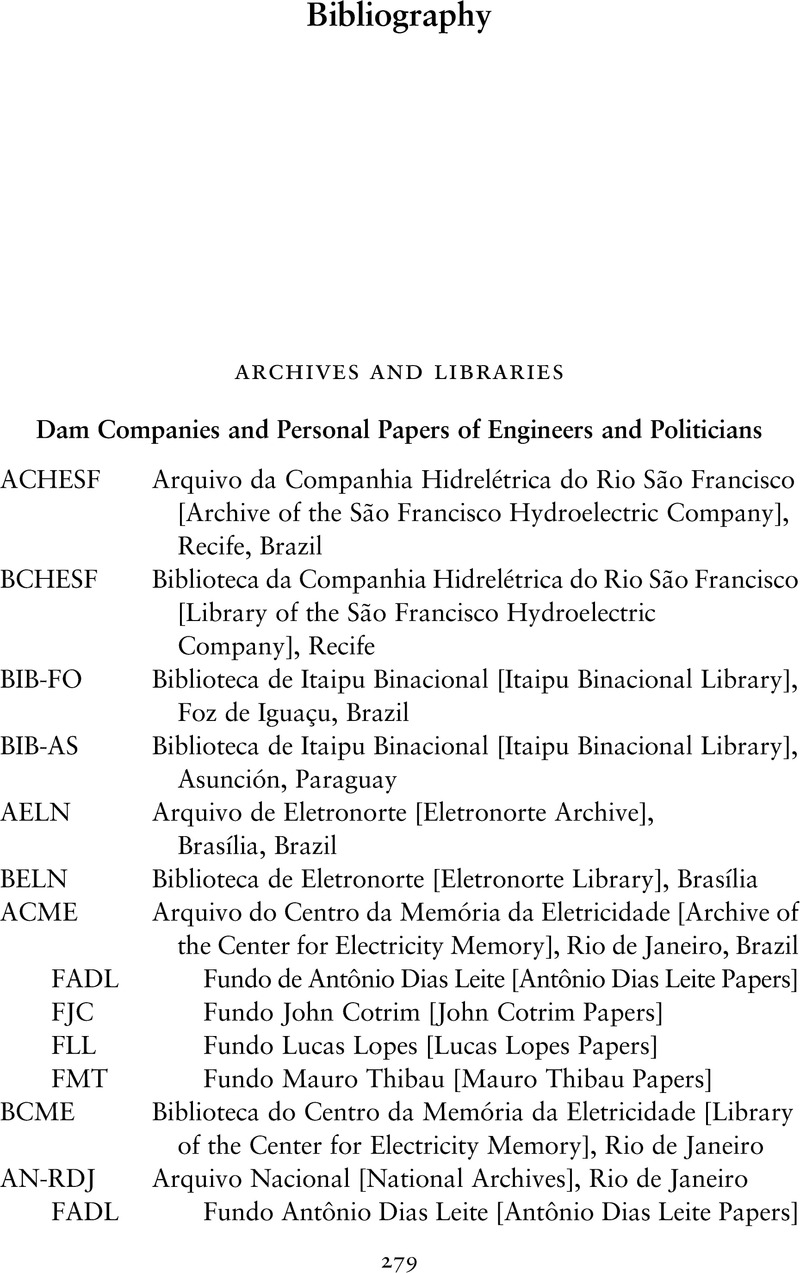Book contents
- Hydropower in Authoritarian Brazil
- Studies in Environment and History
- Hydropower in Authoritarian Brazil
- Copyright page
- Dedication
- Contents
- Figures
- Acknowledgments
- Notes on the Text
- Introduction
- 1 Setting the Scene
- 2 Building “the Big Dam”
- 3 Pharaonic Environmentalism
- 4 Negotiating with Floodwaters
- 5 Environmental Transformations
- 6 The Notorious Balbina Dam
- 7 Aftermath
- Conclusion
- Bibliography
- Index
- Series page
- References
Bibliography
Published online by Cambridge University Press: aN Invalid Date NaN
- Hydropower in Authoritarian Brazil
- Studies in Environment and History
- Hydropower in Authoritarian Brazil
- Copyright page
- Dedication
- Contents
- Figures
- Acknowledgments
- Notes on the Text
- Introduction
- 1 Setting the Scene
- 2 Building “the Big Dam”
- 3 Pharaonic Environmentalism
- 4 Negotiating with Floodwaters
- 5 Environmental Transformations
- 6 The Notorious Balbina Dam
- 7 Aftermath
- Conclusion
- Bibliography
- Index
- Series page
- References
Summary

- Type
- Chapter
- Information
- Hydropower in Authoritarian BrazilAn Environmental History of Low-Carbon Energy, 1960s–90s, pp. 279 - 304Publisher: Cambridge University PressPrint publication year: 2024



